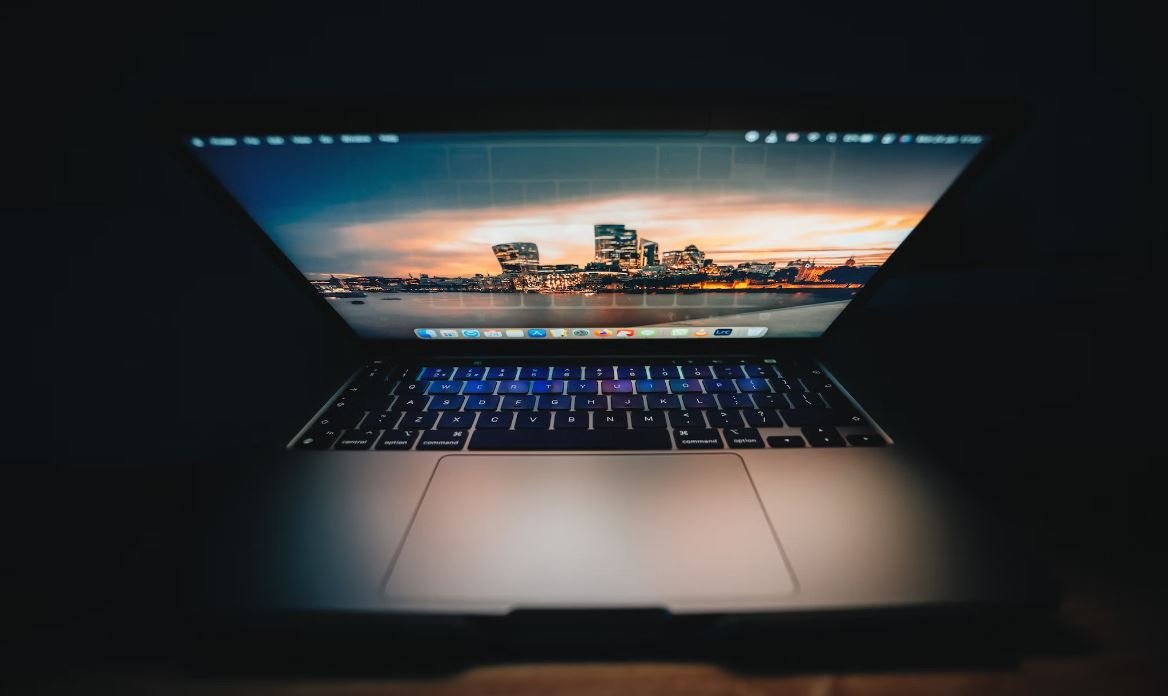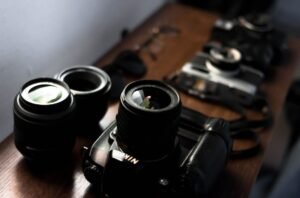Why Film Is Better Than Digital
Film photography has been around for more than a century, and while digital photography has gained popularity in recent years, there are still several compelling reasons why film is superior to its digital counterpart.
Key Takeaways:
- Film offers a unique aesthetic and nostalgic charm.
- The analog process of shooting on film encourages deliberate and thoughtful photography.
- Film has a wide dynamic range and creates smooth, natural-looking tones.
One of the primary reasons why film is preferred by many photographers is its unique aesthetic. **Film photography has a distinct, timeless quality that cannot be replicated by digital cameras**. The grain, colors, and overall look of film images evoke a sense of nostalgia and often have a more artistic feel compared to their digital counterparts. While digital images can be edited and manipulated to resemble film, true film captures have a certain authenticity that cannot be replicated.
The process of shooting film requires a more deliberate and thoughtful approach to photography. **Film photographers have a limited number of shots on a roll, which encourages them to carefully compose and consider each image before pressing the shutter**. This attention to detail and mindfulness in capturing a moment often results in more intentional and meaningful photographs. In contrast, digital cameras offer virtually unlimited shots, which can lead to a “spray and pray” approach where photographers take numerous pictures in the hopes of getting a few good ones.
Film also has a wider dynamic range compared to digital sensors, which allows it to capture a greater range of light and produce smoother, more natural-looking tones. **Digital cameras have improved significantly in recent years, but some photographers find that film still outperforms digital in terms of capturing detail in both highlights and shadows**. Film’s unique ability to handle extreme lighting conditions can be particularly advantageous in challenging shooting situations, such as high-contrast landscapes or bright sunlight.
Table 1: Comparison of Film and Digital Photography
| Aspect | Film | Digital |
|---|---|---|
| Aesthetic | Bespoke, nostalgic | Flexible, versatile |
| Workflow | Deliberate, measured | Fast, instant |
| Dynamic Range | Wide range, smooth tones | Improving, but limited |
Furthermore, film offers a tangible and tactile experience that digital photography cannot replicate. **The process of loading film into a camera, manually advancing frames, and developing the film by hand can be a rewarding and immersive creative journey**. The physical nature of film allows photographers to have a deeper connection with each photograph, as they can hold the actual negatives or prints in their hands.
Although digital cameras have made photography more accessible and convenient, film remains a favorite among many professionals and enthusiasts. **Film photography forces photographers to slow down, think critically, and appreciate the art of capturing a moment**. This slower, more intentional approach often leads to photographs that have a greater emotional impact and a timeless quality.
Table 2: Film Photography vs. Digital Photography
| Aspect | Film Photography | Digital Photography |
|---|---|---|
| Aesthetic | Unique, nostalgic | Varied, adjustable |
| Workflow | Deliberate, methodical | Fast, efficient |
| Flexibility | Fixed ISO, limited edits | Variable ISO, extensive edits |
In conclusion, while digital photography has its undeniable advantages, film photography offers a unique and cherished experience that remains unparalleled. **Film’s aesthetic appeal, deliberate workflow, wide dynamic range, and tangible nature are just some of the reasons why film continues to thrive in the digital age**. So whether you’re a seasoned photographer or simply curious about diving into the world of film, embrace the charm and creativity that this classic medium has to offer.

Why Film Is Better Than Digital
Common Misconceptions
One common misconception that people have about film photography is that it is outdated and obsolete in the digital age. However, this is not true. Film photography offers a unique aesthetic and quality that cannot be replicated by digital cameras.
- Film photography has a nostalgic and timeless charm.
- Film captures a wider range of tones and colors.
- Film images have a natural grain that adds character and depth.
Another misconception is that film photography is more expensive and time-consuming compared to digital photography. While it is true that film and developing costs can add up over time, it is possible to shoot film on a budget. Additionally, the process of shooting with film can be a more deliberate and mindful experience, leading to more thoughtful and memorable photographs.
- There are affordable film cameras available in the market.
- Developing film at home can help cut costs.
- Film photography encourages a more intentional approach to taking photos.
Many people believe that digital photography offers more convenience and flexibility than film photography. While digital cameras certainly provide instant gratification and the ability to review and edit images on the spot, film photography has its own advantages. The limitations of film can actually help foster creativity and experimentation in ways that digital photography may not.
- Film photographers must carefully consider each shot before pressing the shutter button.
- Film photography encourages photographers to slow down and be more patient.
- Film forces photographers to work within limitations, fostering creativity.
Some individuals think that film photography is only for professionals or experienced photographers. However, film photography is for anyone who appreciates the art and process of capturing images on film. It offers a unique learning experience and can be enjoyed by beginners and enthusiasts alike.
- There are resources available online for learning film photography techniques.
- Film cameras often have manual settings, making it easy to learn the basics of photography.
- Experimenting with film can be a fun and rewarding hobby for all skill levels.
Lastly, there is a misconception that film photography is not as accessible as digital photography. While it is true that film may not be as widely available as digital cameras, there is still a thriving film community and numerous online resources for film photographers.
- Many camera stores still carry film and offer film developing services.
- Online marketplaces provide a range of film cameras and accessories.
- Various online communities and forums cater to film photography enthusiasts.

The Importance of Film in Preserving Visual Arts
Before the advent of digital photography, film was the primary medium used to capture and preserve visual arts. Film offers unique characteristics and advantages over digital technology, making it an irreplaceable tool for preserving the essence of art. The following tables highlight various aspects of why film is superior to digital in the preservation of visual arts.
1. Film Resolution Comparison
The table below compares the resolution capabilities of film and digital photography. Higher resolution allows for more intricate details to be captured and retained in the image.
| Film Type | Resolution (lines per mm) |
|---|---|
| 35mm Film | 170-200 |
| Medium Format Film | 200-250 |
| Large Format Film | 450-600 |
| Digital (35mm Equivalent) | 50-100 |
2. Longevity of Film Archiving
This table showcases the average lifespan of film archives as compared to digital storage mediums, emphasizing the longevity of film in preserving visual arts for future generations.
| Storage Medium | Estimated Lifespan |
|---|---|
| Archival Film | 100+ years |
| Hard Disk Drives (HDD) | 3-5 years |
| Solid State Drives (SSD) | 10-20 years |
| Cloud Storage | 2-5 years |
3. Film’s Ability to Retain Dynamic Range
Dynamic range refers to the range of tones captured in an image, from the darkest shadows to the brightest highlights. Film preserves a wider dynamic range compared to digital sensors, as shown in the table below.
| Medium | Dynamic Range (stops) |
|---|---|
| 35mm Film | 12-14 |
| Digital Sensor (Full Frame) | 10-12 |
| Digital Sensor (APS-C) | 9-11 |
| Digital Sensor (Micro Four Thirds) | 8-10 |
4. Film’s Unique Color Palette
Film renders colors differently than digital sensors, resulting in a unique color palette. The table below compares film’s color reproduction to traditional RGB digital color representation.
| Color Channel | Film | Digital (RGB) |
|---|---|---|
| Red | R | R |
| Green | G | G |
| Blue | B | B |
| Cyan | C | G + B |
| Magenta | M | R + B |
| Yellow | Y | R + G |
5. Grain as an Aesthetic Element
Film grain adds a unique aesthetic quality to images, enhancing the overall visual appeal. This table showcases the different grain sizes found in various film formats.
| Film Format | Grain Size |
|---|---|
| 35mm Film | Small |
| Medium Format Film | Medium |
| Large Format Film | Large |
6. Camera Lens Compatibility
Film cameras have a wide range of lens compatibility across different models and brands. This table demonstrates the compatibility of different lens mounts with film cameras.
| Lens Mount | Compatible Film Camera Brands |
|---|---|
| Canon EF | Canon, Contax/Yashica, Fujica, Pentax, and more |
| Nikon F | Nikon, Pentax, Canon, Fujica, and more |
| Pentax K | Pentax, Ricoh, Fujica, Nikon, and more |
7. Tangibility and Physicality of Film
Film not only preserves images but also provides a physical medium that can be held and appreciated. This table compares the tactile experience of film with digital photography.
| Aspect | Film | Digital |
|---|---|---|
| Tactile Experience | Can touch, feel, and frame | No physical presence |
| Print Quality | Unaffected by resolution limitations | Depends on digital display quality |
| Artistic Possibilities | Can experiment with different techniques | Limitations based on digital processes |
8. Environmental Impact Comparison
Film photography has a lesser environmental impact compared to digital photography. This table outlines the ecological aspects of both film and digital technologies.
| Aspect | Film | Digital |
|---|---|---|
| Energy Consumption | Low to none | High energy requirements |
| E-Waste | Minimal | Significant electronic waste |
| Chemical Waste | Controlled disposal | Chemical waste from battery production |
9. Film as a Creative Process
Film photography involves a unique creative process that differs from digital photography. The following table highlights various creative aspects of film photography.
| Aspect | Film | Digital |
|---|---|---|
| Craftsmanship | Manual control of exposure and development | Automatic exposure and instant review |
| Waiting Period | Anticipation for the developed results | Immediate image review |
| Scarcity | Limitation of shots per roll | Unlimited shots with memory card |
10. Emotional Connection and Nostalgia
Film photography carries an emotional connection and nostalgic appeal for many individuals. This table highlights the sentiment associated with film and digital technologies.
| Aspect | Film | Digital |
|---|---|---|
| Sentimental Value | Nostalgia and personal attachment | Convenience and accessibility |
| Shooting Experience | Intentional selection of each shot | Continuous shooting and image deletion |
| Societal Perception | Regarded as an art form | Commonplace and mainstream |
In conclusion, film photography offers unparalleled advantages in preserving visual arts. From its higher resolution and dynamic range to unique color palettes and tactile experiences, film captures the essence of art with unmatched authenticity. Its longevity, environmental friendliness, and emotional connection further solidify film’s superiority over digital technology. While digital photography has its merits, film remains the preferred choice for artists, preservationists, and enthusiasts alike.
Why Film Is Better Than Digital
Q: Is film still relevant in the age of digital photography?
A: Yes, film photography continues to be relevant today as it offers unique qualities that are loved by many photographers.
Q: What are the advantages of shooting on film?
A: Shooting on film provides a distinct look with its grain structure, color rendition, and dynamic range, which can be cherished by photographers and appreciated by viewers.
Q: Can film capture more details compared to digital?
A: Film has greater potential for capturing fine details due to its high resolution and lack of digital artifacts such as noise or aliasing.
Q: Does film have a wider dynamic range?
A: Film has a wider dynamic range than most digital cameras, allowing it to handle high contrast scenes with a greater level of detail in both highlight and shadow areas.
Q: Is the process of shooting film more deliberate compared to digital?
A: Yes, shooting on film often requires more intention and consideration as each frame is precious and limited. This can encourage photographers to focus on composition, exposure, and storytelling.
Q: Are there any creative advantages to using film?
A: Film photography offers various creative options through the availability of different types of film stocks, each with its own unique characteristics and aesthetic appeal.
Q: Does film provide a different feeling or mood in photographs?
A: Film has a distinct visual quality that can evoke a nostalgic or artistic mood, adding a sense of authenticity and timelessness to the images.
Q: Does film require more post-processing compared to digital?
A: While film does require some post-processing, it often requires less intensive editing compared to digital photographs, allowing for a more natural and organic look straight from the scanner.
Q: Is film more forgiving of exposure mistakes compared to digital?
A: Film has a greater tolerance for exposure errors, allowing photographers to recover more details from over or underexposed negatives during the printing or scanning process.
Q: Is film more expensive to shoot with than digital?
A: Shooting on film can be more costly due to the expense of film rolls, developing, and scanning. However, it can also encourage photographers to be more selective in their shots and truly value each frame.




